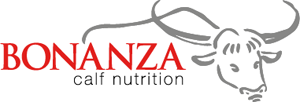Value of a calf sick bay
What is the first thing we do when we see a sick calf, well normally the calf is treated. But in most cases the calf is left among his currently healthy companions.
We know the calf is sick because if it has pneumonia we can see that it is lethargic with dropped ears, possibly runny nose and is most likely coughing. With scour we notice the calf’s dung. Watery dung splashing everywhere or a coughing calf are how a disease spreads so it is the offending bug that is making the calf do it for its own purpose and that is to spread to another calf before its current host defeats it or dies.
So leaving the sick calf with its mates does them no favours but helps the disease causing bugs to expand to prosper. A shared teat full of saliva is another source of infection. If new young calves are introduced to the calf rearing area at the same time the disease will get a greater hold.
To break the chain we need to remove a sick calf regardless of how mild the disease is. This is best achieved by having a few individual pens or a few calf hutches for calves that are sick and those also considered disease risks. The latter include calves that may not have received enough colostrum, heifer’s calves or premature or weak calves. It is best to place these calves down wind of the rest of the calves and to feed last so as not to carry the disease back to the main group
By implementing this policy all calves will benefit from a cleaner environment so more of their nutrients can be used for growth and development. They will eat more, again improving performance and the farm workload will decline as it is easier to remove 1 calf every few weeks than treating 1-2 calves every day.
Contact us
Bonanza Calf Nutrition
Producers of the renowned Shine range of milk replacers for calves and lambs.
© 2017 Bonanza Calf Nutrition Ltd.
FIND US
